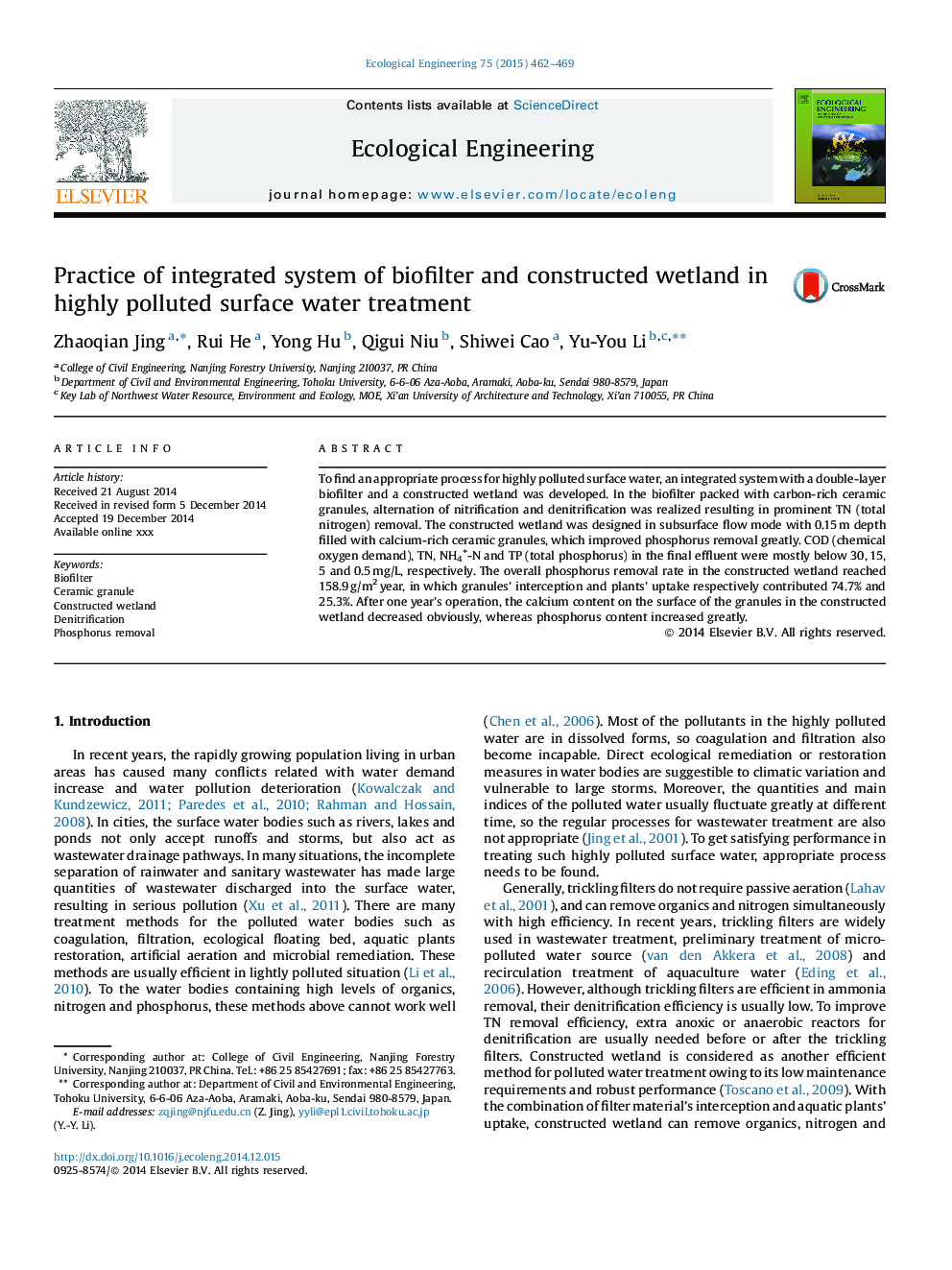| Article ID | Journal | Published Year | Pages | File Type |
|---|---|---|---|---|
| 6301782 | Ecological Engineering | 2015 | 8 Pages |
Abstract
To find an appropriate process for highly polluted surface water, an integrated system with a double-layer biofilter and a constructed wetland was developed. In the biofilter packed with carbon-rich ceramic granules, alternation of nitrification and denitrification was realized resulting in prominent TN (total nitrogen) removal. The constructed wetland was designed in subsurface flow mode with 0.15Â m depth filled with calcium-rich ceramic granules, which improved phosphorus removal greatly. COD (chemical oxygen demand), TN, NH4+-N and TP (total phosphorus) in the final effluent were mostly below 30, 15, 5 and 0.5Â mg/L, respectively. The overall phosphorus removal rate in the constructed wetland reached 158.9Â g/m2Â year, in which granules' interception and plants' uptake respectively contributed 74.7% and 25.3%. After one year's operation, the calcium content on the surface of the granules in the constructed wetland decreased obviously, whereas phosphorus content increased greatly.
Related Topics
Life Sciences
Agricultural and Biological Sciences
Ecology, Evolution, Behavior and Systematics
Authors
Zhaoqian Jing, Rui He, Yong Hu, Qigui Niu, Shiwei Cao, Yu-You Li,
